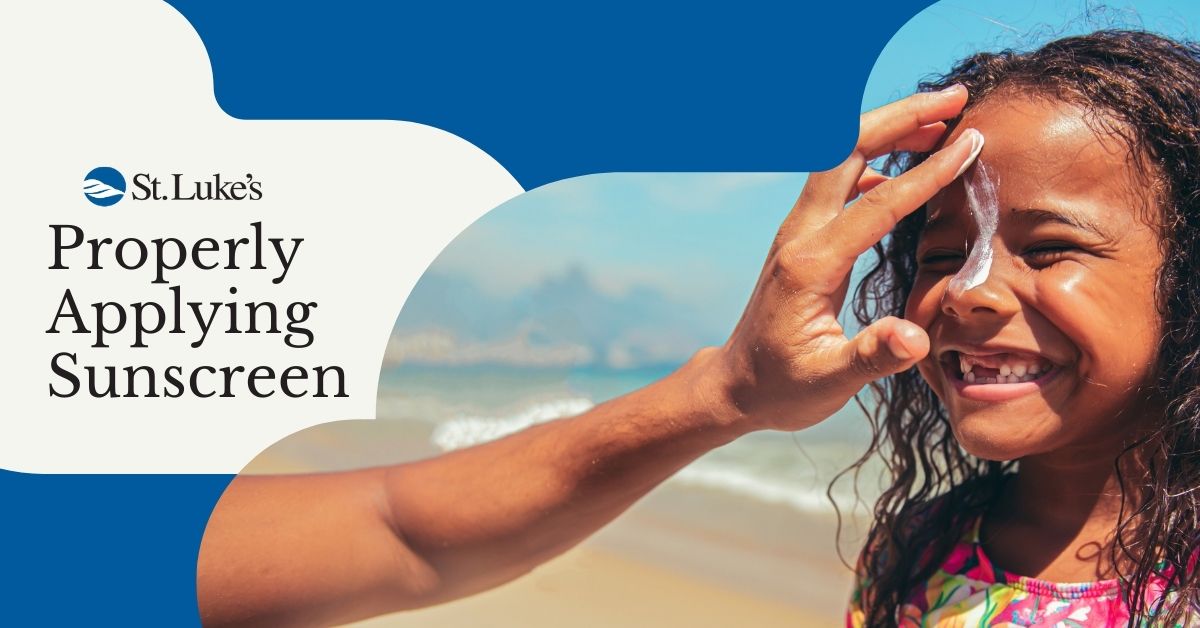How to Properly Apply Sunscreen

Protecting Your Skin with Sunscreen this Summer
With plenty of opportunities for fun in the sun this summer, it’s important to do what you can to protect your skin from sunburns. In light of UV Safety Awareness Month, the health experts at St. Luke’s are here to share some tips to help you and your family protect your skin from damage.
How the Sun Affects the Skin
While getting small amounts of sun exposure can be harmless, spending too much time in direct sunlight can cause damage to your skin. When you spend long periods of time being exposed to the sun’s ultraviolet (UV) rays, these rays are able to penetrate the outer layers of your epidermis, causing cellular damage or even killing them off.
The immediate reaction to this type of cellular damage is getting a sunburn, which is an inflammatory response ranging from mild to blistering in severity. Although sunburns subside on their own, it is important to keep in mind that having 5 or more sunburns in your lifetime doubles your risk of developing melanoma.
Safeguarding Your Skin with Sunscreen
When it comes to protecting your skin from the sun, choosing the right sunscreen is the first step. Regardless of the brand or price point, it is advised that your sunscreen meet the following criteria to provide adequate skin protection:
- It should be labeled as being broad-spectrum.
- It should have a sun protection factor (SPF) of 30 or more.
- It should be labeled as being water-resistant.
To apply your sunblock properly, be sure to follow these steps:
- Use about 1 ounce of sunscreen to cover your entire body.
- Apply sunscreen to all areas that aren’t covered by clothing.
- Apply sunscreen about 15-30 minutes before heading outside.
- Reapply sunscreen every 2 hours or immediately after swimming.
Whether you're spending time at the lake or just heading out to walk the dog, always remember to apply sunscreen!
Immediate Care Options at St. Luke’s
If you need immediate attention and your primary care provider is unavailable, Aspirus St. Luke's offers a variety of immediate care options. To learn more about Aspirus St. Luke's immediate care offerings, visit our website.
If you or a family member is experiencing a life-threatening injury or illness, call 911.
